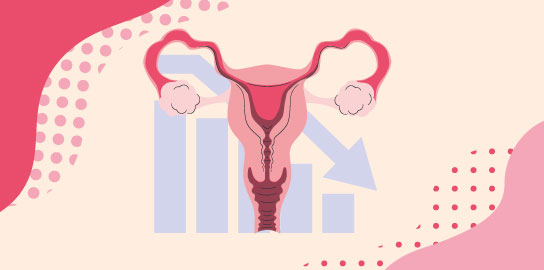The incidence of thyroid cancers is on the rise: over the past 30 years, reported cases have multiplied sixfold in industrialised countries, mainly concerning “small” cancers. The proportion of papillary micro-cancers has risen from 5% to 50%, while the incidence of cancers larger than 4 cm has not increased. As a result, around 70% of thyroid cancers have a low risk of recurrence, yet the number of thyroidectomies performed in France remains high (24,000 in 2021, of which 44% were for benign nodules), with a significant impact on patients’ quality of life. As a result, better selection of patients for surgery remains a topical issue.
In 2022, the World Health Organization (WHO) published a new classification of thyroid cancers.
Cancers derived from follicular cells: follicular, papillary, or high-grade carcinomas (over 90% of thyroid cancers)
- Benign tumors: follicular nodular disease of the thyroid, follicular adenoma, follicular adenoma with papillary architecture, oncocytic adenoma of the thyroid.
- Low-risk cancers: non-invasive follicular thyroid neoplasm with papillary-like nuclear features (NIFTP), thyroid tumors of uncertain malignant potential, hyalinising trabecular tumors.
- Malignant neoplasms: well-differentiated carcinomas (including RAS-like tumors (follicular carcinomas and papillary cancers of follicular subtype) and BRAF-like tumors (papillary carcinomas, oncocytic carcinomas), high-grade carcinomas (well-differentiated or poorly differentiated), anaplastic carcinomas (undifferentiated).
Cancers derived from thyroid T cells: medullary carcinomas.
Differentiated thyroid cancers of follicular origin fall into three categories, depending on the risk of recurrence:
- 60% to 75% are at low risk of recurrence (< 5%): papillary or vesicular histological type, with no vascular invasion, no lymph node involvement or N1 < 0.2 cm and < 5 lymph nodes, no extra-thyroid extension,
- 5% to 20% are at intermediate risk (5% to 20%): aggressive subtypes, with vascular invasion, lymph node involvement (N1 > 5 and size < 3 cm), with extra-thyroidal extension,
- 5% are at high risk of recurrence (> 20%): high-grade histological type, with vascular invasion (> 4), lymph node involvement (palpable N1 or M1) and massive extra-thyroid extension.
Management of follicular, papillary and high-grade carcinomas
For many years, treatment was based on a total thyroidectomy with lymph node clearance, radioactive iodine (100 mci in all patients), and TSH suppression (TSH suppression target and annual follow-up). Today, we are witnessing a therapeutic de-escalation, with fewer total surgeries and less lymph node dissections; cases for radioactive iodine treatment have decreased, as have the doses of iodine used when it is applied; and finally, fewer TSH braking procedures are being carried out, along with fewer follow-ups.
Follicular cell-derived cancers: surgical treatment
- Cancer ≤ 1 cm, with no pre- or intra-operative lymph node involvement (N0), no extra-thyroidal extension, and no suspicious contra-lateral lesions (T1AN0).
In these cancers where there is a low risk of recurrence, a lobectomy is weighed against active surveillance or radiofrequency treatment. The advantage of a lobectomy over a thyroidectomy is that 70% of patients will not require thyroid hormones, but there still remains a 40% to 60% risk of needing a thyroidectomy at a later stage.
Active surveillance is recommended in patients with a single Eu-TIRADS 5/Bethesda V/VI tumor ≤ 10 mm, where the lymph node is not affected. This is especially preferred in patients over 60 who possess a single nodule detected by contours on an ultrasound, without lymph node involvement, and by an experienced team. However, it should be avoided in young patients (under 18 to 20) with suspected extension, whose tumour is close to the trachea or recurrent nerve (N1 or M1), with an aggressive subtype, and performed by an inexperienced team.
- For cancers measuring 1 cm to 4 cm (cN0), with no extra-thyroidal extension, and no suspicious contra-lateral lesions:
Lobectomy is weighed against thyroidectomy; - In cancers with adenopathies (cN1), and/or extra-thyroidal extension, and/or suspicious contra-lateral lesions, and/or T3 or T4 (> 4 cm):
Thyroidectomy with lymph node clearance is indicated.
Follicular cell-derived cancers: treatment with radioactive iodine
Treatment with radioactive iodine in patients undergoing total thyroidectomy has three objectives: ablative (destruction of remnants, simplified follow-up), adjuvant (destruction of any small-volume tumour residues, improved recurrence-free survival), and therapeutic (destruction or reduction of iodine-binding metastases, reduced risk of relapse, put into remission). However, it does not appear to be necessary for all patients. A post-operative work-up including thyroid ultrasound and thyroglobulin/Ac anti-thyroglobulin assays could help select patients who could benefit from it.
Cancers derived from follicular cells: treatment with levothyroxine
Today, this treatment is applied on a case-by-case basis, depending on the initial risk assessed by pathology. For patients to be treated in this way, TSH targets for the first 6 months are modulated according to risk level.
Initial TSH target | |
Very low risk or if lobectomy | 0,5 < TSH < 2 mUI/L |
Low risk, treated with Iodine | 0,1 < TSH < 0,5 mUI/L |
Intermediate risk | 0,1 < TSH < 0,5 mUI/L |
High risk (metastases) | TSH < 0,1 |
Haugen BR, Alexander EK, Bible KC, et al. 2015 American Thyroid Association Management Guidelines for Adult Patients with Thyroid Nodules and Differentiated Thyroid Cancer: The American Thyroid Association Guidelines Task Force on Thyroid Nodules and Differentiated Thyroid Cancer. Thyroid. 2016 Jan;26(1):1-133.
Follicular cell-derived cancers: patient follow-up at 6 to 12 months
Response to initial treatment is assessed at 6 to 12 months by thyroglobulin (Tg) and anti-thyroglobulin Ac (anti-Tg Ac) assays (combined with a TSH assay) and by a cervical ultrasound.
Response to levothyroxine therapy (LT4): recommendations of the American Thyroid Association (ATA) ATA Guidelines & Statements (thyroid.org).
| Surgery followed by radioactive iodine treatment | Surgery alone (no radioiodine treatment) |
Excellent response to treatment Ultrasound Thyroglobulin under LT4 Anti-thyroglobulin Ac |
Normal < 0,2 ng/mL Negative |
Normal < 1 ng/mL Negative |
Indeterminate response Ultrasound Thyroglobulin under LT4 Anti-thyroglobulin Ac |
Normal 0,2 to 1 ng/mL Present or decreased |
Normal 1 to 2 ng/mL Present or decreased |
Incomplete biological response Ultrasound Thyroglobulin under LT4 Anti-thyroglobulin Ac |
Normal ≥1 ng/mL Increased |
Normal ≥ 2 ng/mL Increased |
Incomplete structural response Ultrasound/CT/MRI
|
Abnormal
|
Abnormal
|
Depending on response to treatment, TSH targets will be adapted after 6 to 12 months:
| TSH target after 6-12 months |
Excellent response to treatment |
|
Low risk, treated with Iodine | 0,5 < TSH < 2 mUI/L |
Intermediate risk | 0,5 < TSH < 2 mUI/L |
High risk (metastases) | 0,1 < TSH < 0,5 mUI/L |
If disease persists | TSH < 0,1 mUI/L |
Monitoring of patients who respond well to treatment at 6-12 months will also be adjusted. This will include an annual clinical examination and Tg and anti-Tg Ac assays, but only if the patient has undergone a total thyroidectomy and iodine treatment (or just a total thyroidectomy, though this remains debatable). The frequency of ultrasound scans will be modulated according to the risk of recurrence:
| Ultrasound monitoring (proposals) |
Very low risk | Ultrasound at 5 and 10 years |
Low risk, treated with Iodine | Ultrasound at 5 then 7 years |
Intermediate risk | Ultrasound at 3, 5, and 10 years |
High risk (metastases) | Ultrasound at 1, 3, and 6 years |
Medullary thyroid cancer (MTC)
MTCs are rare (< 5% of thyroid cancers). They partially comprise Multiple Endocrine Neoplasia 2 (MEN2) in 30% of cases. They are also sporadic in 70% of cases, of which 50% have a somatic mutation in the RET gene.
Clinically, they have few symptoms, except for 25% of patients who experience diarrhea and flushing.
The reliable biomarker for these cancers is calcitonin.
Since 2022, a new entity has emerged: high-grade CMT (histologically diagnosed), which presents a greater risk of metastasis and reduced life expectancy.
Treatment of CMT
Treatment is not urgent, but requires special expertise (trained surgeon in an expert center). Before surgery, a pheochromocytoma must be ruled out and blood calcium levels checked. Ultrasound should be used to assess extension, particularly to the lymph nodes, and possibly in conjunction with cervicothoracic CT. The role of F-DOPA PET (positron emission tomography using fluoro-DOPA as a radioactive tracer) is currently being studied.
If calcitonin is above 500 pg/mL pre-operatively, a more complete extension work-up is required in which surgery is combined with lymph node dissection.
For patients with metastatic CMT that progresses diffusely and/or rapidly within 12 months, newly targeted therapies are proposed (after all other possible local treatments have been excluded):Tyrosine kinase inhibitors (vandetanib, cabozantinib) are validated as first-line treatments, regardless of their RET status while specific, well tolerated anti RET agents (selpercatinib, pralsetinib) serve as second-line treatments for patients with a RET mutation.
Post-operative follow-up of CMT
- According to ESMO 2022 recommendations, follow-up 30 to 60 days after surgery involves using calcitonin and CEA assays, as well as neck ultrasound, to distinguish various types of responses and determine appropriate actions:Excellent response: calcitonin and CEA are undetectable or within the reference range, with no sign of the structural disease on the ultrasound. Monitoring with CEA and calcitonin ought to take place every 6 months for the first year, then annually. In this situation, the 10-year survival is > 95% and the risk of late recurrence is estimated at 3%;
- Incomplete biochemical response: calcitonin is detectable and CEA is abnormal. There is an absence of the structural disease on the ultrasound. Monitoring with CEA and calcitonin is recommended every 3 to 6 months to determine the doubling time of these markers, and ultrasound every 6 to 12 months. Additional imaging will be performed according to calcitonin and CEA levels, along with their doubling time. In this situation, around 40% of morphological recurrences are observed within 10 years;
- Incomplete structural response: abnormal ultrasound (independent from CEA and calcitonin levels) signifying persistent disease. If the disease is stable, active surveillance is performed; if the disease is symptomatic and progressive, locoregional or systemic treatment is proposed (vandetanib, cabozantinib).
Filetti S, Durante C, Hartl DM, et al; ESMO Guidelines Committee. ESMO Clinical Practice Guideline update on the use of systemic therapy in advanced thyroid cancer. Ann Oncol. 2022 Jul;33(7):674-684.
Anaplastic thyroid cancers
Anaplastic thyroid cancers are rare (< 5% of thyroid cancers) and serious, they constitute a diagnostic and therapeutic emergency. They most often present as a large cervical mass. The diagnosis must be confirmed as soon as possible by histopathology on biopsy, combined with an ultrasound and CT scan ± FDG PET (positron emission tomoscintigraphy using fluorodeoxyglucose as a tracer).
Surgical advice, fibroscopy, and a multidisciplinary consultation meeting (RCP) are urgently required. BRAF status must also be determined as quickly as possible, in the search for a therapeutic target. A BRAF mutation is found in around 40% of cases; in the remaining cases, NGS (Next-Generation Sequencing) is recommended in search of other therapeutic targets. Treatment targeting BRAF leads to a 60% partial response rate, with a median survival of 14 months to 15 months.
Key points
Therapeutic de-escalation is preferred in the management of low-risk cancers, while the use of molecular biology to guide targeted therapy in the management of medullary or anaplastic cancers.
The benefits of immunoassays in lymph node needle rinses
These assays have developed considerably in recent years – particularly thyroglobulin assays (Tg-FNA or Thyroglobulin measurement in Fine-Needle Aspiration) which detect lymph node metastases from differentiated thyroid cancers.
Thyroglobulin and differentiated thyroid cancers
As we have already seen, response to initial treatment of differentiated thyroid cancer (DTC) is assessed at 6 months to 12 months by thyroglobulin (Tg) and anti-thyroglobulin Ac (anti-Tg Ac) assays combined with TSH, and by a cervical ultrasound. When lymph node metastasis of CDT is suspected, serum Tg assays can be misleading (15% to 20% false negatives).
For this reason, Tg-FNA assays have been proposed for use in lymph node cytopuncture needle rinses in order to detect CDT metastases, particularly due to their excellent performance in terms of diagnostic sensitivity and specificity (which prove superior to those of cytology (with no false positives)). Procedures have become standardised, but the threshold at which this assay’s diagnostic value can be considered unquestionable is still under discussion.
Cytopuncture in practice: pre-analytical factors
Cytopuncture is performed under ultrasound guidance, and the sample quality depends on the quality of the operator.
Different protocols have been used throughout various studies – in terms of aspirated volume, collection buffer, and storage temperature. In all cases, a low protein concentration in the rinsing fluid is the main pre-analytical source of Tg-FNA measurement uncertainty. It is recommended to use a protein assay buffer (ideally the assay kit buffer) that blocks Tg adsorption (leading to false negatives). These conditions ensure better sample preservation and less loss in the recovery of the amount of Tg present in the lymph node.
Boux de Casson F, Moal V, Gauchez AS, et al. Determination of thyroglobulin in lymph node cytopuncture needle rinse fluids: influence of pre-analytical conditions. Annales de Biologie Clinique 2017 ;75 (2) :173-80.
Analytical factors
Automated techniques, similar to those used for serum Tg and Tg-FNA assays, are available in most laboratories. However, there is considerable variability between techniques due to a lack of assay standardization. Mass spectrometry is more efficient as it eliminates the need for anti-Tg Ac. The technique used must have good functional sensitivity if low Tg concentrations are to be assayed, and care must be taken to avoid a possible hook effect.
However, there is no recommendation for the use of any particular assay, and each laboratory must define its own cut-off.
The Tg-FNA result can be expressed in ng/suction, which represents the amount of Tg collected in the volume of wash fluid and differs from a concentration, or, more often, in ng/mL, which makes it possible to compare with the serum Tg concentration (although this is questionable as the size of the puncture needles differs).
Tg-FNA thresholds have been proposed for monitoring CDT in surgical patients:
< 1 ng/FNA | Normal |
1 – 10 ng/FNA | To be confirmed with cytology |
≥ 10 ng/FNA | Positive |
In all cases, the Tg-FNA value must be interpreted in conjunction with the tumor stage, histological type, size, lymph node location, and serum Tg assay.
Wang Y, Duan Y, Li H, et al. Detection of thyroglobulin in fine-needle aspiration for diagnosis of metastatic lateral cervical lymph nodes in papillary thyroid carcinoma: A retrospective study. Front Oncol. 2022 Sep 20;12:909723.
Other assays in lymph node needle rinses
- Calcitonin-FNA and medullary thyroid cancer (MTC)
Calcitonin is an excellent marker of CMT, but there are still dubious clinical situations in which cytology is of little value.
Calcitonin-FNA is therefore a useful diagnostic tool in patients with equivocal cytology results. Its performance in terms of sensitivity and specificity is good, but there is no standardisation of thresholds.
Trimboli P. et al, Diagnostic tests for medullary thyroid carcinoma :an umbrella review. Endocrine 2023 ;81 :183-93.
- PTH-FNA and parathyroid adenoma
PTH measured in the cytopuncture rinse fluid can be used to differentiate between thyroid and parathyroid nodules. However, the literature in this field remains poor, and there is currently no consensus on the discriminatory value of PTH-FNA (proposed cut-off: PTH-FNA/PTHs ratio ≥ 2), nor any recommendations. Given the instability of PTH, pre-analytical conditions must be stringent.
Biological assays in lymph node cytopuncture needle rinsing fluids: key points to bear in mind
In cases of suspected lymph node metastasis due to thyroid cancer, Tg-FNA assay is useful as a complement to cytology, which remains non-contributory or unrepresentative in 5% to10% of cases, and is responsible for 6% to 8% of false negatives. It is particularly useful in the case of poorly cellular samples and cystic lesions. The combination of cytology and FNA-Tg improves diagnostic sensitivity and specificity, reaching values close to 100%.
However, Tg-FNA remains undetectable in certain poorly differentiated cancers (false negatives). Tg-FNA assays should be performed at a distance from iodine-131 therapy, as this treatment can lead to false-positive results. Finally, each laboratory must define its own cut-off.
Other markers are used less frequently. In all cases, it is essential to compare them with the patient’s clinical situation.


